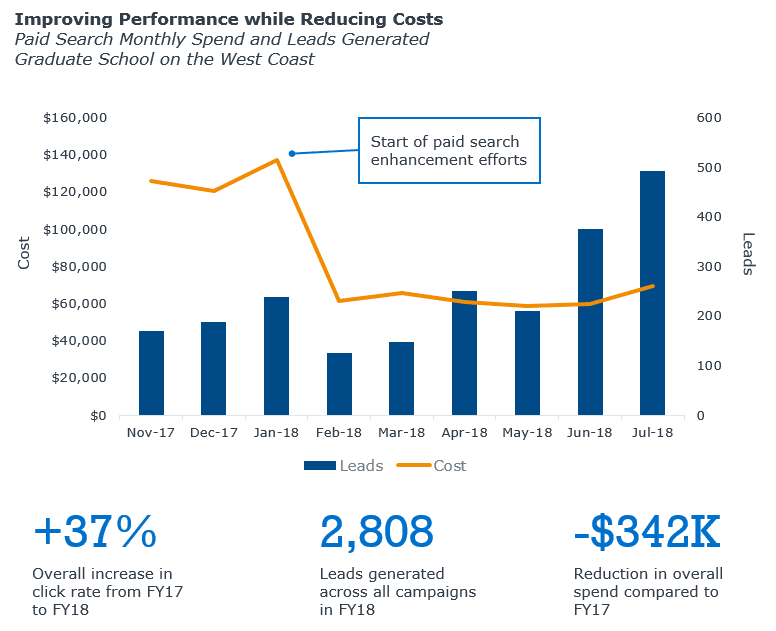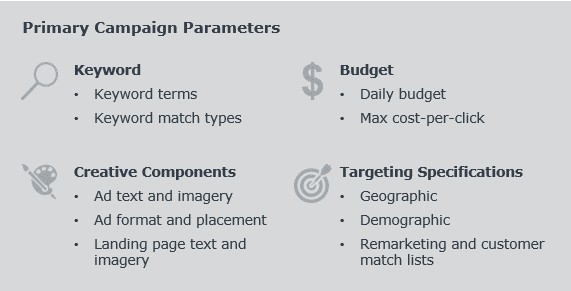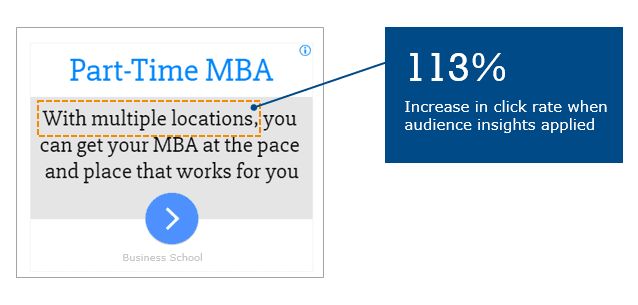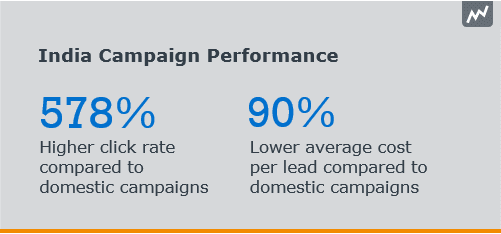Why paid search doesn’t have to break your graduate program’s marketing budget
September 12, 2018
There are more than 15 million adult learners using Google every month. So it’s no surprise that many colleges and universities spend a large portion of their marketing budgets on Google Ads.
While most know paid search can be a valuable channel for engaging prospective students, many don’t realize they’re overpaying for clicks. Or if they do, they aren’t sure exactly how to bring costs down.
-
226%
increase in average cost-per-click among select graduate programs nationally from 2009 to 2014
With competition among graduate programs intensifying, average cost-per-click has increased by 226% among select graduate programs nationally from 2009 to 2014. In this landscape, there’s little room for error in managing the many parameters of paid search campaigns, including keyword selection, geographic targeting, and ad copy and format. And overseeing all of those components effectively and consistently takes specialized knowledge, particularly in higher education, that many schools don’t have in-house.
But paid search can be a highly productive channel if it’s approach the right way.
5 rules to reduce paid search costs—and increase effectiveness
Our Adult Learner Recruitment team has been working with a West Coast graduate school looking to generate leads for several business programs. By making a few strategic changes to the school’s approach to paid search, we were able to increase click rate by 37% in fiscal year 2018, generating 2,808 new leads. And what’s more, we simultaneously decreased overall spend by $342,000—a 24% reduction compared to the previous fiscal year.

Like many schools, this university had been significantly overpaying for paid search clicks. Prior to EAB managing their account, they were paying $17.33 per click for the term “MBA.” With a few strategic updates, we were able to drive that cost-per-click down to $3.35, a decrease of 81%.
Here are five guidelines to help you replicate these results in your campaigns:
1. Monitor performance daily
In a single paid search campaign, there are many parameters to consider, such as keyword term and match type, budget settings, ad and landing page creative, geographic and demographic targeting specifications, and others. Each one of those factors can significantly impact click rate and cost-per-click. And performance can change over time due to shifts in user search trends.

Near-constant monitoring and responsive adjustment is required to ensure you’re making the most of your budget. And consistently identifying areas of opportunity and vulnerability isn’t easy. Due to the level of time and expertise required, many schools enlist the help of external specialists to manage paid search campaigns.
Learn how our Adult Learner Recruitment services can help
2. Know your audience
Paid search can be a great way to capture unknown prospects, but it can also be highly effective in converting known target audiences if you create campaigns that resonate with their interests. As a part of our work with this client, we leveraged consumer data and machine learning to create detailed profiles of the target audience of each of their programs, including information on their best-fit students’ interests, personality types, and more. We knew the target audience for this school’s part-time MBA program prioritized convenience and accessibility. When we applied this insight to paid search ads, by incorporating copy that emphasized multiple campus locations and schedule flexibility, we saw a 113% increase in click rate.
Tailoring ad copy boosts click rates

3. Test your creatives constantly
In addition to testing personalized messaging, we experimented with a number of other approaches to ad creative. Using responsive ad formats allowed us to try out different versions of ads and landing pages to pinpoint the imagery and messaging that resonated most with each particular audience. By progressively testing and incorporating lessons learned, we were able optimize click rates and produce that 37% overall increase in click rate.
Sample responsive ads tested

4. Integrate paid search into your multi-channel strategy
Paid search doesn’t operate in isolation. For example, after seeing a Facebook ad or receiving a direct mail piece about your school, a prospective student may decide to do some research on Google. When they do, you’ll want to be sure that your own paid search results appear first and that your messaging complements that of your other campaigns.
You’ll then be well-positioned to produce clicks to your landing page and form fills. Even if students visit the landing page and leave, you can retarget them with further ads to keep your program top-of-mind. Either way, paid search plays a pivotal role in driving digital marketing engagement.
Paid search supports multi-channel marketing

5. Analyze paid search trends to identify new opportunities
Paid search platforms provide a treasure trove of data for marketers about ad performance that can be segmented according to a variety of audience characteristics. To make the most out of your paid search efforts, be sure to leverage this data to identify latent opportunity. While analyzing this client’s paid search data, we found that 54% of all MBA search traffic was originating from India. Even more, these leads had an 87% lower cost-per-click than U.S. based searches and a 15% higher conversion rate.
How big brands leverage consumer data—and how you can too
Knowing this presented a promising new source of leads, we partnered with the client to launch a designated India campaign. It ultimately performed well, generating 89 new leads, at a click rate that was 578% higher than that of domestic campaigns and a 90% lower cost-per-lead.

While there’s no magic bullet in paid search, performance improvements are within reach for many colleges and universities. And when schools pair better paid search with a strong organic search strategy, they can ensure that they’re engaging students at key points throughout the recruitment process—without breaking the bank.
More Blogs

Is it time to transition away from your OPM?

What it takes to win in grad and adult enrollment today
